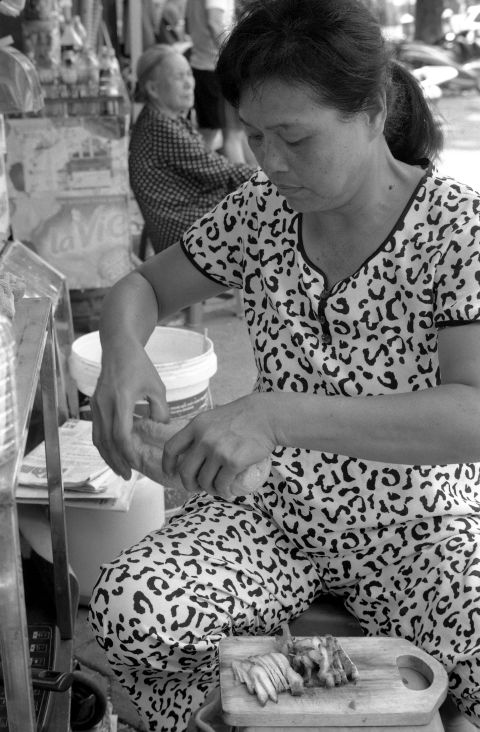How to Make Candid Portraits
On Film
18 min read by Dmitri.Published on . Updated on .
For a medium that’s often referred to as “slow,” film has enabled countless spontaneous masterpieces. The candid approach is responsible for creating distinctly sincere portraits I’ve come to admire ever since I got interested in photography.
This guide explains a few methods that should help you improve your unstaged photographs.
In this guide: Long read. Download and keep this guide for your reference. What is “candid” photography? When is it most appropriate to shoot candid portraits? What’s the best lens for candid portraits? What’s the best film camera for candid portraits? What’s the best film for candid portraits? Candid portraits with flash. How to capture the right moment. How to set the focus for candid portraits. Set exposure using Sunny 16 or use autoexposure for candid portraits. Build a better candid portrait portfolio by being there with your camera. Change the scene for better photos. Experiment with gear and technique to gain inspiration and increase your creative vocabulary. Reaching satisfaction with your photography. Support this blog & get premium features with GOLD memberships!
Long read. Download and keep this guide for your reference.
This guide will take about 20 min to read in full. Get it as a free printable PDF for easy reading, offline access, and future reference.
➜ Free Download: How to Make Candid Portraits on Film (PDF)
You will be asked to sign up for a free account with Analog.Cafe. It comes with access to more downloadable guides, additional website features, and a monthly community newsletter.
What is “candid” photography?
Candid means unstaged or without any direction from the photographer. Your subject’s consent and whether they know that you might take a photo of them isn’t relevant.
As long as your subject does not pose for the picture, you are taking a candid portrait.
Any scene may be photographed candidly or as staged. However, portraiture is generally implied when talking about “candid” photography.
Neither candid nor staged approaches are intrinsically better or worse than the next. The terms are so broad that it would be inappropriate to make those kinds of generalizations.
When it comes to public opinion, my not-very-scientific Twitter survey revealed that the 37 photographers who answered strongly prefer seeing candid images over studio portraits. However, the same group showed no preference for either type of work when they are the ones holding a camera.
When is it most appropriate to shoot candid portraits?
If your staged photos of someone you know aren’t giving you the results you want, the candid approach may help.
Whenever you point a camera at someone, people react. Some people may maintain a confident, natural expression in front of a camera without training; others do not. You may try to build a rapport with your model and influence their expressions with some work; however, you may not have much expertise or desire to do that if you are like me.
The candid approach gives you an option to circumvent that tension by avoiding it altogether. Keep in mind that this is not a “get out of jail free card.” A good candid photograph may require just as much work as working with your model on a staged image.
If you want to document an event with your subject’s attention away from your camera, the candid approach may be more appropriate.
If your subject is performing a dangerous task, it may be best to let them keep their attention on doing it safely.
It may also be unethical to ask people to pretend to do something when you are planning to present your work as a documentary.
Or you may look for a particular expression from your subject that is difficult or impossible to stage.
If your subject is a random person, you may not have the chance to stage them for your photograph properly, in which case you may take an opportunity to take their portrait candidly.
Note that taking photographs of strangers (or people you know) without their consent may not be legal in some circumstances or it may be ethically inappropriate. I generally try to be sensitive to how people feel about my camera and avoid ruining peoples’ day over my hobby/project. There are times when certain events have to be documented, and there are times when they feel like they do, but it would’ve been better to put the camera down.
What’s the best lens for candid portraits?
The consensus seems to be that it’s generally easier to take candid portraits with smaller lenses and cameras. 35mm film is probably the best format for this type of photography. My preference is with compact rangefinder and autofocus cameras with fixed (non-detachable) prime lenses.
Candid photography requires quick reaction times.
Your subject(s) and the scene may change rapidly as you busy yourself with creating a composition and choosing the right moment to capture. I think that a good autofocus system isn’t a bad idea, though it has failed on me on a few occasions with cheaper cameras — so beware. Zone focusing, expanding your depth of field, focusing using your feet, and letting your subjects walk into your focus area are discussed below. All of these methods employ manual lenses.
